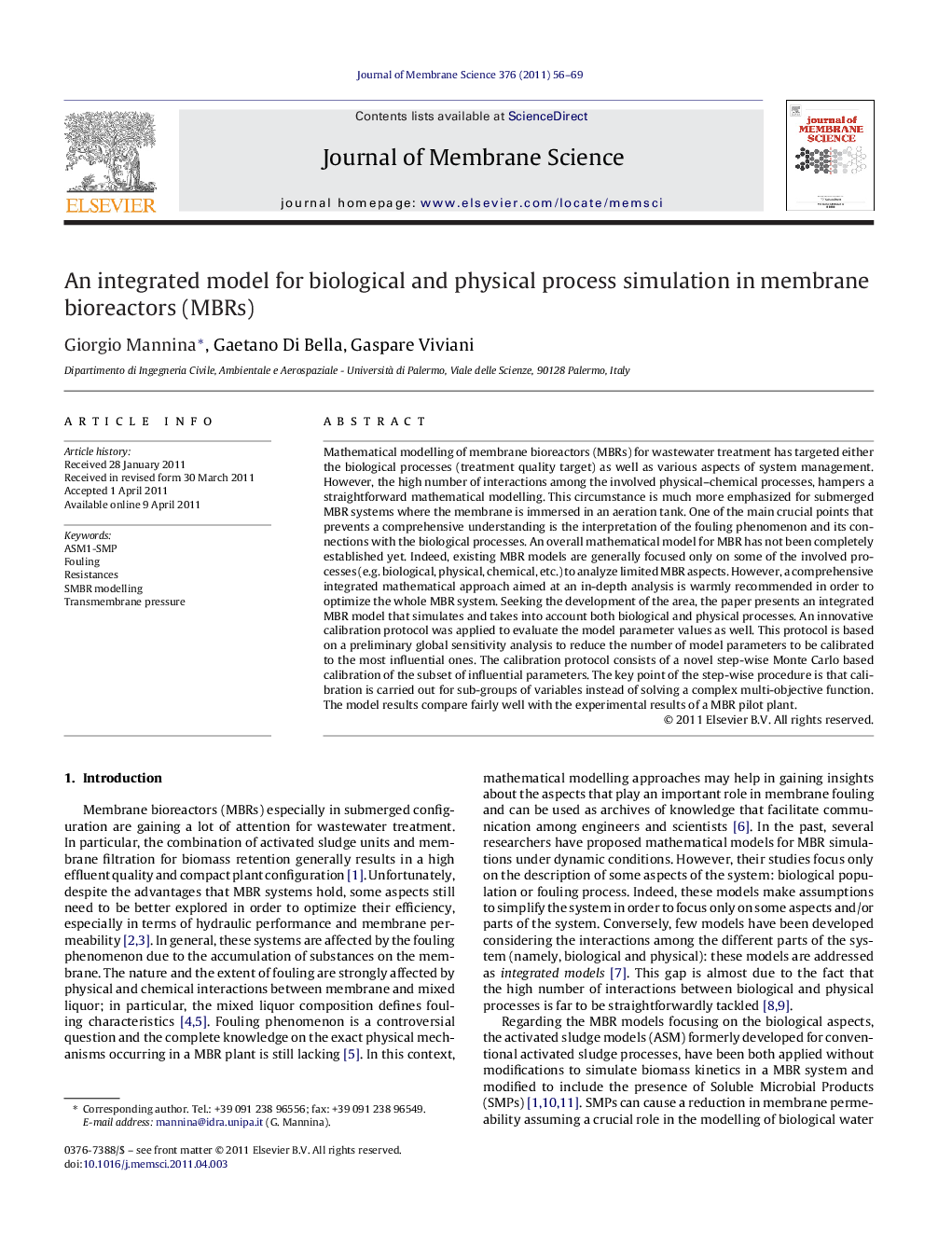| کد مقاله | کد نشریه | سال انتشار | مقاله انگلیسی | نسخه تمام متن |
|---|---|---|---|---|
| 635711 | 1456103 | 2011 | 14 صفحه PDF | دانلود رایگان |

Mathematical modelling of membrane bioreactors (MBRs) for wastewater treatment has targeted either the biological processes (treatment quality target) as well as various aspects of system management. However, the high number of interactions among the involved physical–chemical processes, hampers a straightforward mathematical modelling. This circumstance is much more emphasized for submerged MBR systems where the membrane is immersed in an aeration tank. One of the main crucial points that prevents a comprehensive understanding is the interpretation of the fouling phenomenon and its connections with the biological processes. An overall mathematical model for MBR has not been completely established yet. Indeed, existing MBR models are generally focused only on some of the involved processes (e.g. biological, physical, chemical, etc.) to analyze limited MBR aspects. However, a comprehensive integrated mathematical approach aimed at an in-depth analysis is warmly recommended in order to optimize the whole MBR system. Seeking the development of the area, the paper presents an integrated MBR model that simulates and takes into account both biological and physical processes. An innovative calibration protocol was applied to evaluate the model parameter values as well. This protocol is based on a preliminary global sensitivity analysis to reduce the number of model parameters to be calibrated to the most influential ones. The calibration protocol consists of a novel step-wise Monte Carlo based calibration of the subset of influential parameters. The key point of the step-wise procedure is that calibration is carried out for sub-groups of variables instead of solving a complex multi-objective function. The model results compare fairly well with the experimental results of a MBR pilot plant.
► An integrated mathematical model able to simulate both biological and physical processes is presented.
► An innovative calibration protocol able to tackle the overparametric issue typical of ASM is employed.
► Calibrated model parameters were different from classical activated ones.
► Importance of fouling modelling was investigated by properly simulating both biological and physical sub-model.
► Setting up of a mathematical tool to design as well as manage MBR systems is constituted.
Journal: Journal of Membrane Science - Volume 376, Issues 1–2, 1 July 2011, Pages 56–69